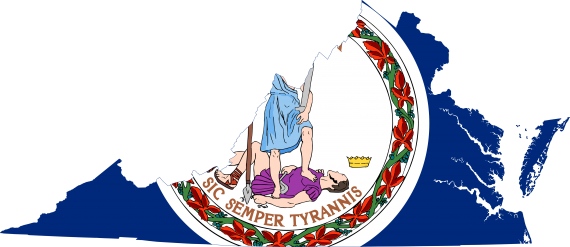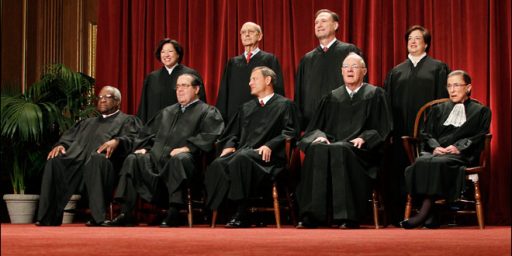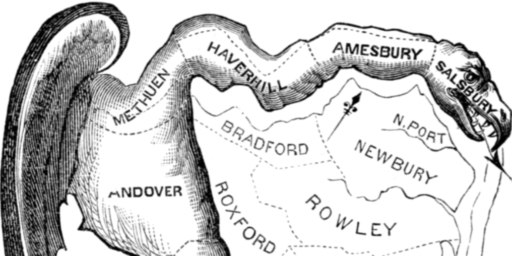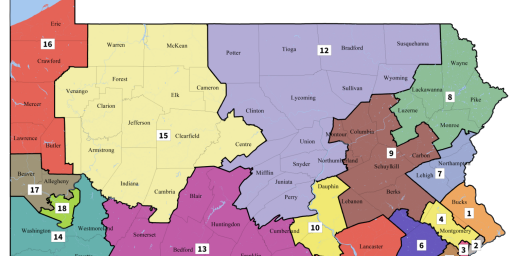SCOTUS Accepts Virginia Redistricting Case That Tests Use Of Race And Politics In Drawing Lines
The Supreme Court has accepted for appeal a Virginia case that deal with the issue of using race and politics as a basis for drawing district lines.
In addition to taking up its first abortion case in eight years, the Supreme Court agreed on Friday to hear an appeal in a case out of Virginia that could have a major impact on race-based redistricting throughout the country:\
RICHMOND — The U.S. Supreme Court said Friday that it will review whether Virginia lawmakers improperly packed minority voters into one congressional district at the expense of their influence elsewhere in the state.
The court will consider whether earlier court decisions that ruled the districts invalid were correct. A three-judge panel of the U.S. District Court of the Eastern District of Virginia has twice invalidated the boundaries of a snake-like district that stretches from Richmond southeast to Norfolk — and ordered lawmakers to redraw the election map.
The Supreme Court’s action represents a small victory for Virginia House Speaker William J. Howell (R-Stafford) and Senate Majority Leader Thomas K. Norment Jr. (R-James City), whose chambers would draw up the boundaries. Republicans had insisted on letting appeals play out before they abided by the order in case the high court intervened, as it did Friday.
“Today’s order from the Supreme Court validates the Speaker’s position that the defendants should have the opportunity to fully litigate this case before a new congressional map is drawn,” Howell spokesman Matt Moran said in a statement. “In August, the Speaker and Senator Norment asked the Eastern District Court to delay its timeline for this very reason. We will monitor the case as it moves forward.”
Gov. Terry McAuliffe (D) this summer convened a special session to adopt new maps, but an unrelated tussle over a judicial appointment abruptly ended the session before any progress could be made.
McAuliffe asked the federal district court to redraw the maps on its own — a process that has played out while the Supreme Court considered whether to take up the case.
Howell also recorded a win last month when a panel of three federal judges ruled on a similar case that targeted 12 House of Delegates districts. In that case, the court ruled the districts constitutional, and Democrats have filed an appeal of their own, potentially putting a second Virginia redistricting case before the Supreme Court.
The two Virginia lawsuits and similar ones around the country were brought by Marc E. Elias and funded by the National Democratic Redistricting Trust. Elias is general counsel to Hillary Rodham Clinton’s presidential campaign and worked on the McAuliffe campaign.
Elias said he reads it as a “good sign” that the Supreme Court wants to consider the case, in part based on who has the authority to challenge lower-court rulings.
“It’s not a surprise in that the Supreme Court had to say something,” he said. “I think that the standing question is an interesting one so it doesn’t entirely surprise me that they took it up. But you never know what motivates the Supreme Court to take a case.”
But in saying it would consider the case, the court also raised an issue that might prevent it from reaching the merits of the panel’s decision: whether any of those appealing the ruling have legal standing to challenge it.
The court called for briefing on “whether appellants lack standing because none reside in or represent the only congressional district whose constitutionality is at issue in this case.”
Both Virginia lawsuits assert that Republicans packed racial minorities into certain districts to dilute their influence elsewhere. Democrats contend that the state’s lopsided congressional and House delegations — the GOP has eight of Virginia’s 11 congressional seats and a supermajority in the House — is evidence of illegal gerrymandering.
Given the standing issue it raised, it’s entirely possible that the Justices could end up ruling in a way that avoids getting to the central in the case, because the rest of the case cannot go forward if the parties bringing the case lack standing. An adverse ruling on standing would also have an impact on all the underlying proceedings, of course, since it would mean that the lower courts that are still considering some of the related in the case would not be able to proceed unless the cases were amended to bring in parties that do have standing. It strikes me, though, that the standing issue may not be as complicated as it appears at first blush. Even if a particular Plaintiff does not live in the district most directly impacted by the redistricting plan, it seems rather obvious that their interests would still be impacted no matter where they live in Virginia. If the offending district has to be withdrawn, then that could potentially effect the borders of every other district in the Commonwealth in some way or another. This would seem to be most especially true of the districts that are geographically closest to the majority-minority district, of course, but it’s could also arguably be true is any of the Virginia’s eleven Congressional districts given the fact that a change in the lines of one district will potentially have an impact on the makeup of all the others.
Assuming the Court is satisfied that the Plaintiffs here have standing to bring the challenge, then it will then move on to the primary issue in the case, and this is where the ruling could have a real impact on redistricting nationwide, and especially across most of the South. Ever since the passage of the Voting Rights Act and similar legislation, and especially in the wake of several Supreme Court cases dealing with how district lines should be drawn to address the concerns of those laws, there has always been a conflict between the goal of drawing districts that give members of minority groups a voice in the political process by allowing for districts where minority groups are the majority of the voting population, and the goal of drawing districts that are rational, relatively compact, and reflect some degree of geographic and political reality. The other factor that also comes into play is that drawing district lines to concentrate minority groups in one or two districts ends up creating districts that are overwhelmingly white, something which obviously benefits Republicans in most parts of the South. One of the predominant issues in the Virginia case is the allegation that the primary motivation for creating the offending majority-minority district was the political goal of creating safer districts for incumbents in the surrounding area and elsewhere in the state rather than the goal of maximizing minority representation with the effect that minority influence over election results is, effectively, reduced because of the way it was concentrated.
Election law expert Rick Hasen summarizes many of the issues at stake in the Virginia case, and notes that this case follows on the heals of a case the Justices decided in the last time out of Alabama. In that case, the Justices accepted many of the arguments raised by the minority challengers to Alabama’s district lines and remanded the case to the District Court for reconsideration of the redistricting plan in a way that looks at the lines drawn on an individual district basis rather than statewide. A ruling favorable to the Plaintiffs in this case could further complicate effort to create politically safe districts by relying on majority-minority districts in other states. A ruling against the Plaintiffs would essentially seem to give free reign to the practice. Whatever the result, given the fact that there are still ongoing battles regarding redistricting based on the 2010 Census going on in several parts of the country and the fact that the 2020 Census is fast approaching, this will be a case worth watching.
You can find further information about this case at the SCOTUSBlog information page.






Funny how things change. I remember back in the day when it was Democrats who favored districts shaped like N-dimensional hypercubes and Republicans who opposed it. In North Carolina,you used to have one district that started in Charlotte, literally went up I-85 and then incorporated black areas of Durham. One NC legislator joked that you could rive up I-85 with your doors open and kill half the district. We’ve moved away from that level of absurdity but I think, at some point, people are going to have to make up their minds whether they want minority-majority districts or whether they want sensibly drawn districts. It’s getting harder and harder to split the baby.
It is shockingly difficult to write down a description of what makes a district geographically ‘reasonable’. It ends up being like pornography — that people know it when they see it. The law works really badly in cases like that.
Definitions based on composition are even worse — they put the cart before the horse.
‘Tis a puzzlement.